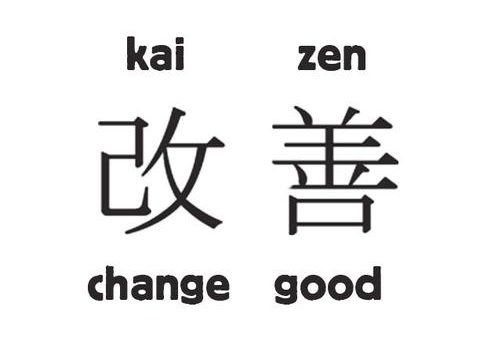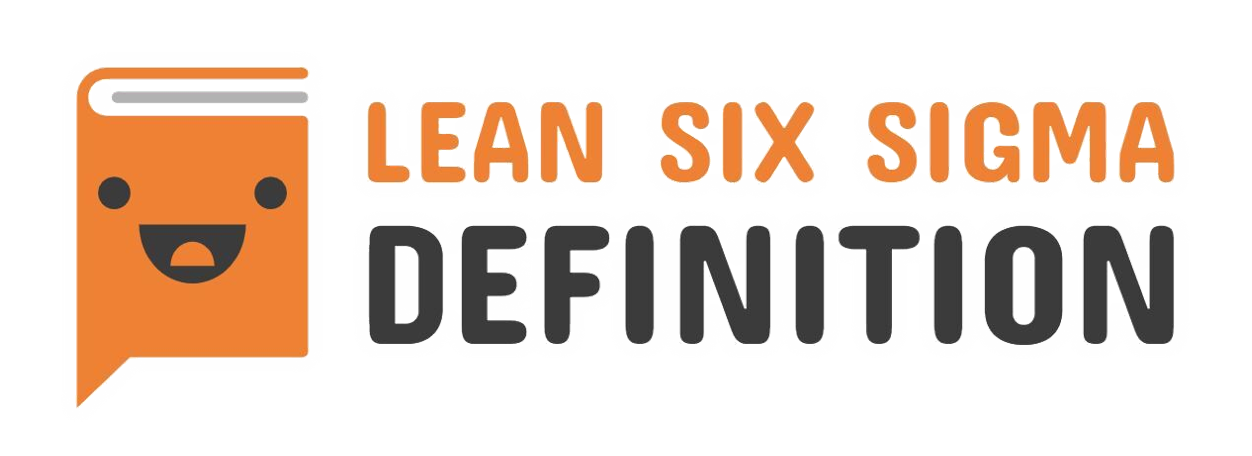Kaizen

From the Japanese words “kai-” which means “change” and “-zen” which means “good.” The popular meaning from Toyota is “continuous improvement” or “small incremental improvements” of all areas of a company, not just manufacturing.
Kaizen means all personnel are expected to stop their work when they encounter any abnormality and, along with their supervisor, suggest an improvement to resolve the abnormality.
Shigeo Shingo helped train manufacturing engineers on implementing the efficiency processes with his P-course, that later influenced Toyota’s creation of kaizen.
Masaaki Imai helped document kaizen principles and methods with his books in the mid-1980’s.
Here is a video explanation about this translation
When the improvement requires personnel outside of the immediate work area, a kaizen burst (or radical process improvement) event may be useful.
Kaizen events are working sessions with a cross-functional team, not a planning event. The purpose is to complete a specific set of tasks by the end of the session. Some of the time is spent determining what to change, but most of the time is spent implementing the improvement ideas, then validating that the improvements were successful and embraced. The goal is to implement 80% of the actions during the event, with the remaining 20% of the improvements completed within the next 30 days.
A Kaizen burst event should be part of an overall program of continuous improvement. If a stand-alone event, then it may hinder the success of the event, and the gains might not be sustained.
The history of the kaizen event (called Kaizen Blitz) started with Japanese consultants Yoshiki Iwata and Chihiro Nakao (who worked at Toyota Gosei) who wanted to help companies make improvements. However, incremental improvements were difficult to support due to travel from Japan to the US. The improvements were accelerated into a week-long event in 1988 at Jacobs Vehicle Equipment Company (“Jake’s Brakes”), at the request of president George Koenigsaecker.
It was initially called “Five Days and One Night,” meaning you would learn and work for five days and get very little sleep during the week. It actually should be called kaikaku, which means radical change, where kaizen means small incremental improvement.
Want help with a kaizen event?
Watch a free video of a recent workshop on Kaizen Events below…
Download the Kaizen workshop slides and links >>>
Learn more about kaizen events at Shmula.com >>>
Links
- Wikipedia
- How “Five Days and One Night” Transformed the Jacobs Production System
- Yoshiki Iwata’s “Five Days and One Night” Special Edition Brochure
Books
- Gemba Kaizen: A Commonsense Approach to a Continuous Improvement Strategy by Masaaki Imai
- Kaizen and the Art of Creative Thinking by Shigeo Shingo
- Healthcare Kaizen: Engaging Front-Line Staff in Sustainable Continuous Improvements by Mark Graban
- The Idea Generator: Quick and Easy Kaizen by Bunji Tozawa and Norman Bodek
- Kaizen: The Japanese Secret to Lasting Change―Small Steps to Big Goals by Sarah Harvey
- Kaizen for the Shop Floor: A Zero-Waste Environment with Process Automation
- Kaizen for the Shop Floor: A Zero-Waste Environment with Process Automation
- Kaizen: The Key To Japan’s Competitive Success by Masaaki Imai
- The Kaizen Event Planner: Achieving Rapid Improvement in Office, Service, and Technical Environments by Karen Martin and Mike Osterling
- Creating a Kaizen Culture: Align the Organization, Achieve Breakthrough Results, and Sustain the Gains by Jon Miller, Mike Wroblewski, Jaime Villafuerte
- The Spirit of Kaizen: Creating Lasting Excellence One Small Step at a Time by Robert Maurer
- Kaizen Demystified – A Practical and Systematic Method of Evaluating Circumstances to Use the Most Efficient and Effective Type of Kaizen to Improve Processes
- The Kaizen Blitz: Accelerating Breakthroughs in Productivity and Performance by Anthony C. Laraia, Patricia E. Moody, Robert W. Hall

Download a FREE Kaizen Event Guide from Creative Safety Supply >>>
Additional Resources
- Kaizen (Lean Continuous Improvement)– creativesafetysupply.com
- Kaizen Events or Daily Kaizen – What to choose?– hiplogic.com
- Introduction to Kaizen– kaizen-news.com
- The Tools of Kaizen– blog.5stoday.com
- The Kaizen Group– 5snews.com
- Great Kaizen Idea – Kaizen by Inspiration– blog.creativesafetysupply.com
- The Concepts of Kaizen– creativesafetypublishing.com
- Gemba Kaizen– lean-news.com
- What is Kaizen?– iecieeechallenge.org

